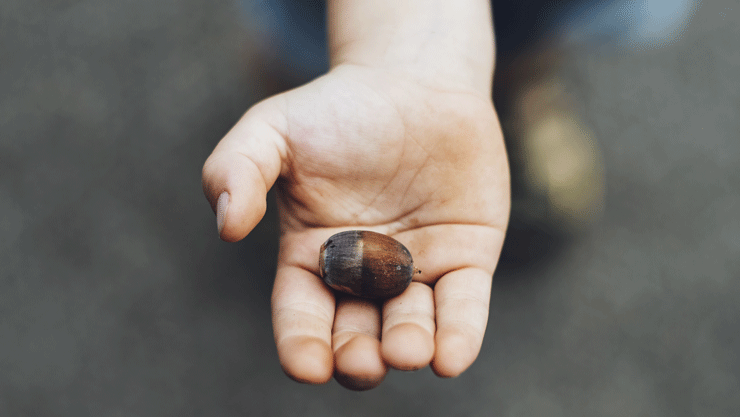News & Views

How to embrace outdoor learning this autumn
Change the quality of your outdoor teaching with this big outdoor learning hack: The Three Muddy Ms. These are the Muddy Puddle Teachers' ethos to retain the quality and purpose of teaching outside. Our ethos is vital in ensuring whatever you do take out there, you do so because it has a purpose. We are no box-tickers over here; we want you to be outside because it brings a benefit to your lesson that being inside would not have given you.
The Three Muddy Ms
- Mother Nature: use natural items where possible. This allows for sensory development to occur but also for children to get hands-on with nature, connect with it and respect it. It also is a great way to be more sustainable, get creative and become original thinkers. Essentially, making something out of nothing is great for nurturing free-range thinking.
- Mental health: when we are outside, we allow kids to be kids. With lots of free, child-led play, time to be silly, be loud, move, talk and play games and connect with others.
- More kids moving: inside is for sitting. Outside is for moving. Encourage lots of big gross motor movements, activity, running and doing all of those physical movements you cannot do for safety reasons inside.
Use one or use all three, but refer to these Three Muddy Ms and you will not go far wrong in teaching outstanding outdoor learning sessions.
No matter what the weather brings, there are opportunities to learn. Here are some top muddy tips to help you get your children out of the classroom this autumn.
Autumn sensory walks
Autumn is the perfect time of year when all of our senses are heightened and this is ideal for drawing out new vocabulary and writing. Children of all ages can do sensory walks. Start by handing out a recycled brown paper bag and prompt children to collect natural items they find outdoors as signs of autumn. Encourage being mindful and allow the children at first to walk and just think while picking up natural items such as leaves, stones and conkers. Depending on their age, you may need to stimulate their thinking to help them engage their senses.
You may find some of these statements helpful :
- ‘Focus on the colours. What colours and shades do you see?’
- ‘Stand still and close your eyes. What do you smell?’
- ‘Find something safe to touch. How does it feel and what sounds do you hear?’
Once you have completed your mindful walk, return to your classroom with your bag and use the experience and items you have found as a stimulus for literacy opportunities.
Examples could be:
- EYFS: glue the items onto paper and label the items using initial letters or encouraging the children to sound them out.
- KS1: write a detailed description of the setting using adjectives and new vocabulary.
- KS2: write a diary entry of a fictional character who was walking around in autumn.

Leaf mazes
There is always an abundance of leaves available in autumn so there is no need to take anything for this activity. This is a great lesson to link to DT or art.
For KS1 and KS2, place the children in groups and then design a maze plan beforehand. Explain what a maze is and that there need to be some routes that arrive at a dead end with just one pathway that takes you to the centre of the maze.
For the younger children, also place them in groups so that they get chances to turn take and communicate and have a printed maze pattern ready for them to try following. Factor in levels of difficulty so that once they have tried one, they can move to the next. This could be as simple as spirals. There are copies of these on the Muddy Puddle Teacher website. Once the children have made their mazes, using the leaves as the outlines and to form the sides of the pathways, try them out!
When the children have tried out their mazes, are there any amendments or improvements they would like to make? Then swap groups and have fun trying out each other's mazes.
Spooky art
Link some activities to Halloween and try making some spooky flat 2D art on a floor surface. Invite your pupils to use natural resources to make art on the floor that resembles images like a pumpkin, ghost and other ghostly objects. For instance, leaves and conkers could be used for the outside of the pumpkin's head with conkers used in the middle for the eyes and mouth. Ask the children to do this independently.
Once complete, invite the children to join up with two other children and think of a story that includes all of their nature-created pictures. For example, one child has a pumpkin, another has a cat and another has a moon. The children then create a story about all of these pictures. For example, a pumpkin made friends with the moon, but the evil cat tried to make them fall out, but finally they realised if they all were kind together, how beautiful the moon shone.
Explore more ways to engage your pupils in outdoor learning with our Outdoor Learning Award.
About the author

Sarah Seaman is the founder and CEO of The Muddy Puddle Teacher. She has a deep-rooted connection with the outdoors and this is entrenched in her work as an award-winning teacher, trainer and presenter. She has recently authored a book, The Muddy Puddle Teacher: A playful way to create an outdoor early years curriculum.